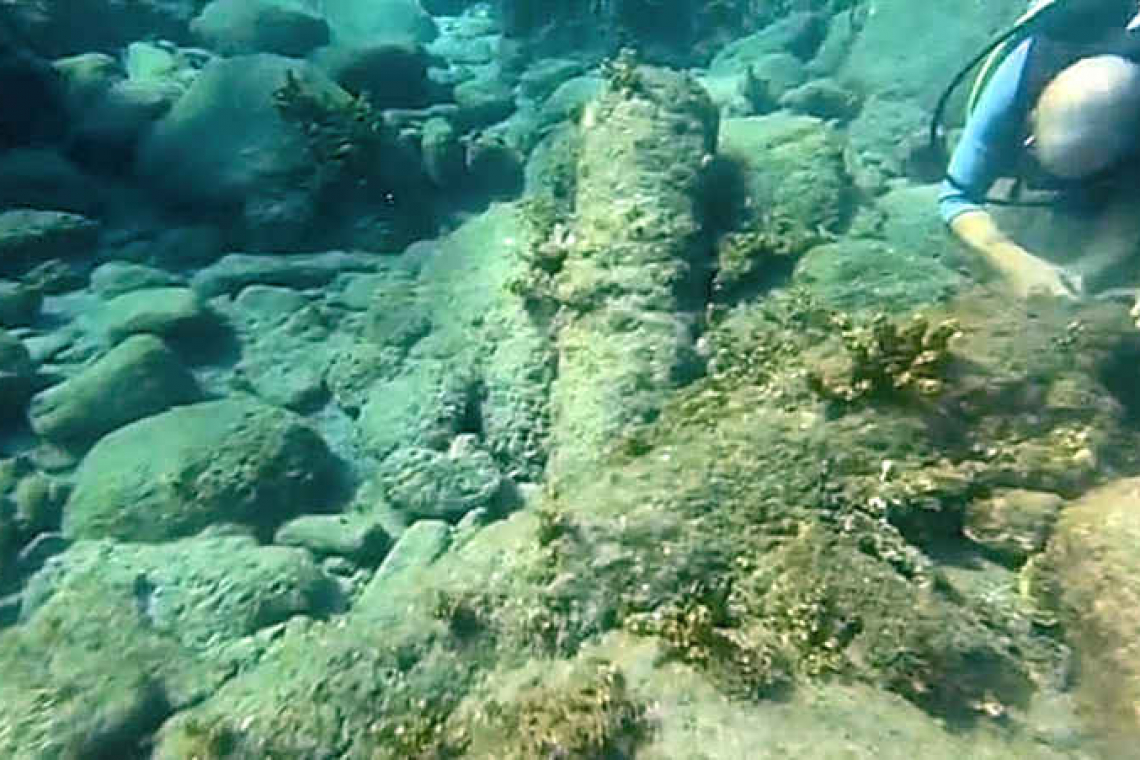The cannons found on the seabed.
SABA--Saba Archaeological Center SABARC announces the completion of archaeological mitigation work at Giles Quarters/Black Rocks as part of the proposed new harbour project, thus preserving a part of Saba’s heritage.
The work was undertaken by principal investigator Dr. Ryan Espersen and Dr. Jay Haviser, both associated with SABARC and Saba, having done archaeological work across Saba for many years.
Despite the restrictions and other difficulties due to COVID-19, the project, supported by the public entity, Port Project, Saba Health Services and others, was undertaken to satisfy both the legal requirements of the BES Maritime Management Act and the Malta/Valetta Treaty.
The three-week intensive project included archaeological surveys of both the land and seafloor that would be impacted by the construction, to understand the length of time the site was occupied by people, how they lived, and what activities took place.
The team gave two presentations of their findings, one on October 21 to a large gathering at Long Haul Grill in Windwardside, which included a display of some of the recovered artefacts: many stone grinding tools, shell tools, red-painted ceramics, and even a large cobble of red-marbled flint from southwestern Puerto Rico.
The preliminary interpretations of the team are that the Black Rocks site, although not a village, was probably a satellite site of the nearby Amerindian village at the present-day village of St. John’s, and dates between 400-600AD. This seaside location is the closest means for people then living in St. John’s to access the sea.
The site would have been a place to land their canoes, produce sisal rope from local agave and penguin cacti, and use these ropes to mend their fishing nets. Several specialised stone tools for producing rope, along with stone fishing net weights, were found at the site to support this theory.
Two large ship cannons were found during the seafloor survey, crossed one on top of the other. They are both nearly 8.2 feet (250 centimetres) long, and as no evidence of a shipwreck was found in the area, it appears they were intentionally sunk, either to reduce weight on a beached ship, or perhaps to prevent them from falling into enemy hands.
The second presentation was made to members of the Saba Island Council, Island Secretary Tim Muller, and Governor Jonathan Johnson, who fielded questions on the importance of archaeological mitigation and preserving heritage in Saba.







